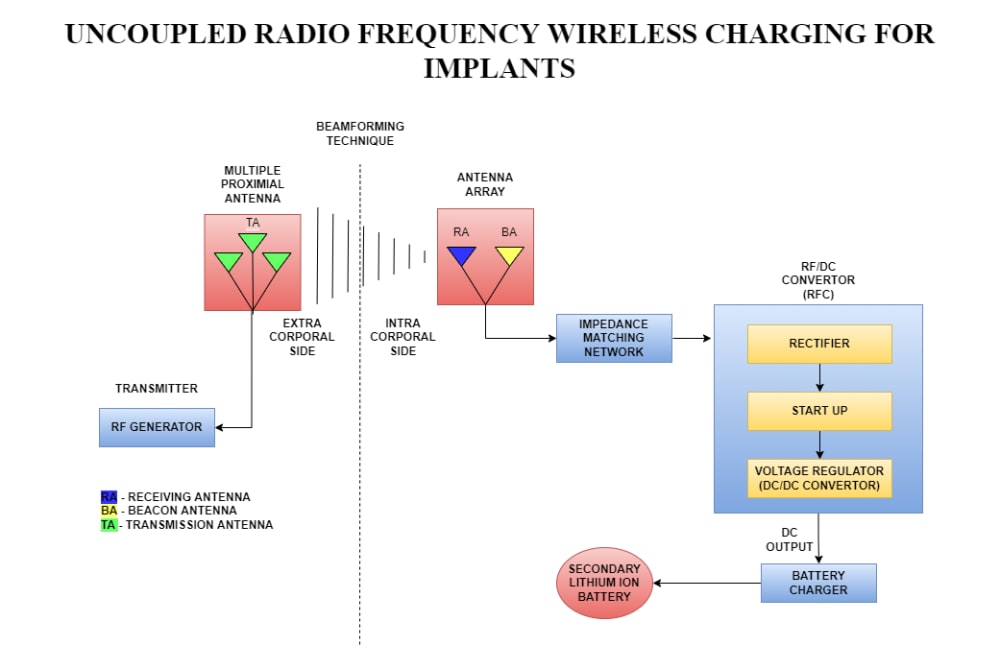Charging a pacemaker’s battery from a certain distance cannot be achieved by tightly or loosely coupled electromagnetic resonant charging. To overcome the above challenge, we developed a device that charges through an uncoupled radio frequency (RF). Wireless charging method will help patients to avoid surgeries. The transmitter present outside the body transmits the millimeter wide RF waves through beamforming. Beamforming technique allows transmission of signal by multiple antennas in proximity towards the target implant, rather than allowing the signal to spread in all directions, like broadcast antenna do.
The implant consists of an antenna array comprising of receiver antennas, where the RF is converted into DC via RF/DC convertor (RFC). Using the DC output the secondary lithium-ion battery is recharged by the charger present inside the implant. A default reference voltage has been set for the Li-ion battery. When the battery reaches empty or near empty, the battery voltage falls below the reference voltage. After identification of this stage, it is set to charge the battery by the transmitter antennas. Using the DC output from the RFC the battery starts to charge. After reaching certain default voltage, constant current supply is maintained and battery charges at a much faster rate. Once the battery reaches certain voltage the power source must be switched from constant current to constant voltage and is not charged fully, to prevent overvoltage at the battery terminal and increase the battery life. Thus, the charging is slowed down and the battery steadily approaches the near maximum Capacity, and the current is shut down automatically cutting of the RF transmitter simultaneously with a notification to the user digitally. As this process is based on beamforming and millimeter wide RF waves, it does not damage the cells directly as it emits non-ionizing radiation and has longer wavelengths. T
This method is said to be economical because there is no need of surgery for the replacement of battery. Since this method is reliable and non-surgical, it would have high worth as pacemaker in the market. Time consumption for the implementation of this product is less, since it is more feasible. It optimizes the workflow of the pacemaker.
Like this entry?
-
About the Entrant
- Name:John Paul V
- Type of entry:teamTeam members:
- ATHIYAMAN G
- AKILESH M
- Patent status:none


